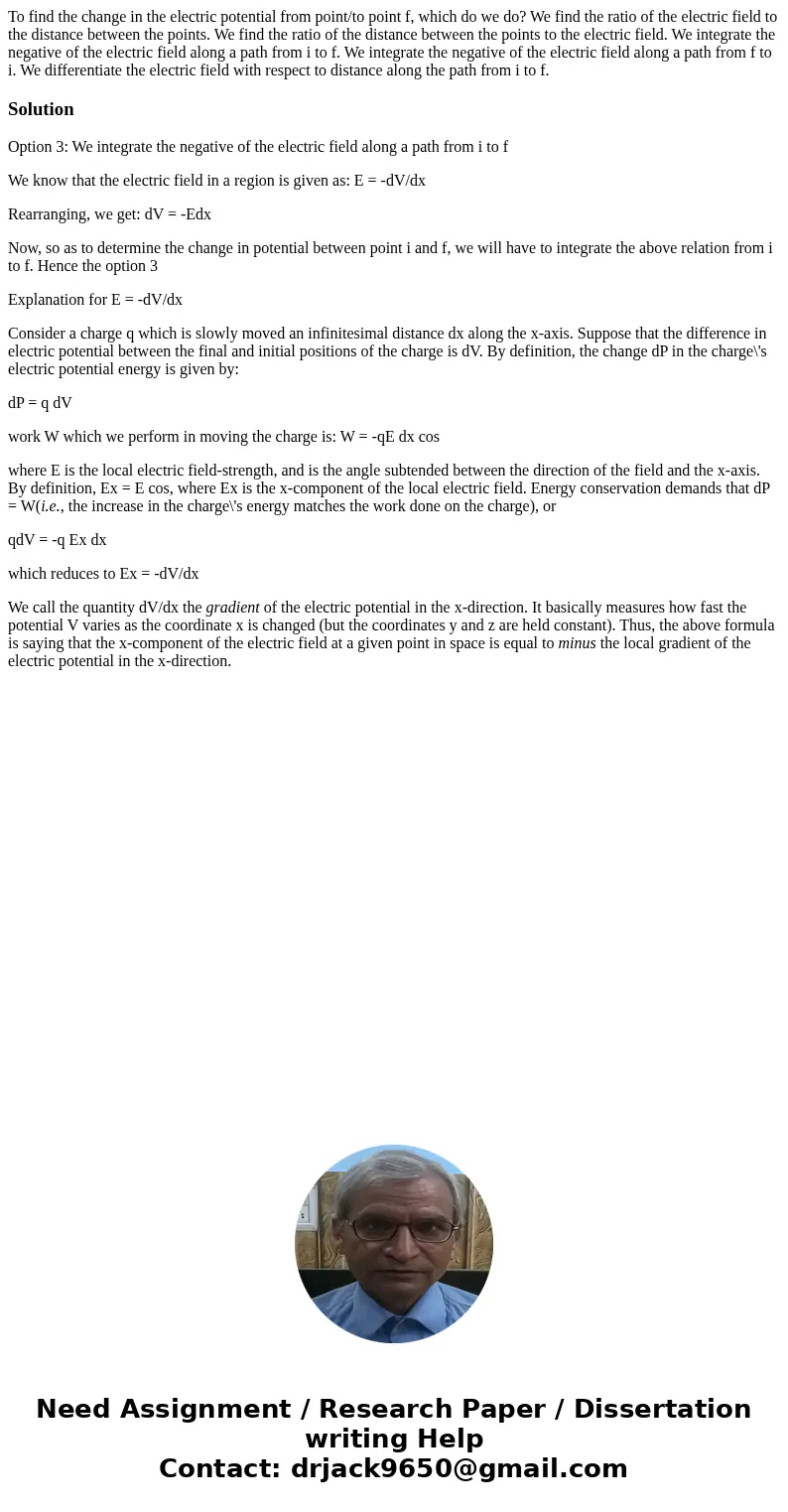To find the change in the electric potential from pointto po
Solution
Option 3: We integrate the negative of the electric field along a path from i to f
We know that the electric field in a region is given as: E = -dV/dx
Rearranging, we get: dV = -Edx
Now, so as to determine the change in potential between point i and f, we will have to integrate the above relation from i to f. Hence the option 3
Explanation for E = -dV/dx
Consider a charge q which is slowly moved an infinitesimal distance dx along the x-axis. Suppose that the difference in electric potential between the final and initial positions of the charge is dV. By definition, the change dP in the charge\'s electric potential energy is given by:
dP = q dV
work W which we perform in moving the charge is: W = -qE dx cos
where E is the local electric field-strength, and is the angle subtended between the direction of the field and the x-axis. By definition, Ex = E cos, where Ex is the x-component of the local electric field. Energy conservation demands that dP = W(i.e., the increase in the charge\'s energy matches the work done on the charge), or
qdV = -q Ex dx
which reduces to Ex = -dV/dx
We call the quantity dV/dx the gradient of the electric potential in the x-direction. It basically measures how fast the potential V varies as the coordinate x is changed (but the coordinates y and z are held constant). Thus, the above formula is saying that the x-component of the electric field at a given point in space is equal to minus the local gradient of the electric potential in the x-direction.

 Homework Sourse
Homework Sourse